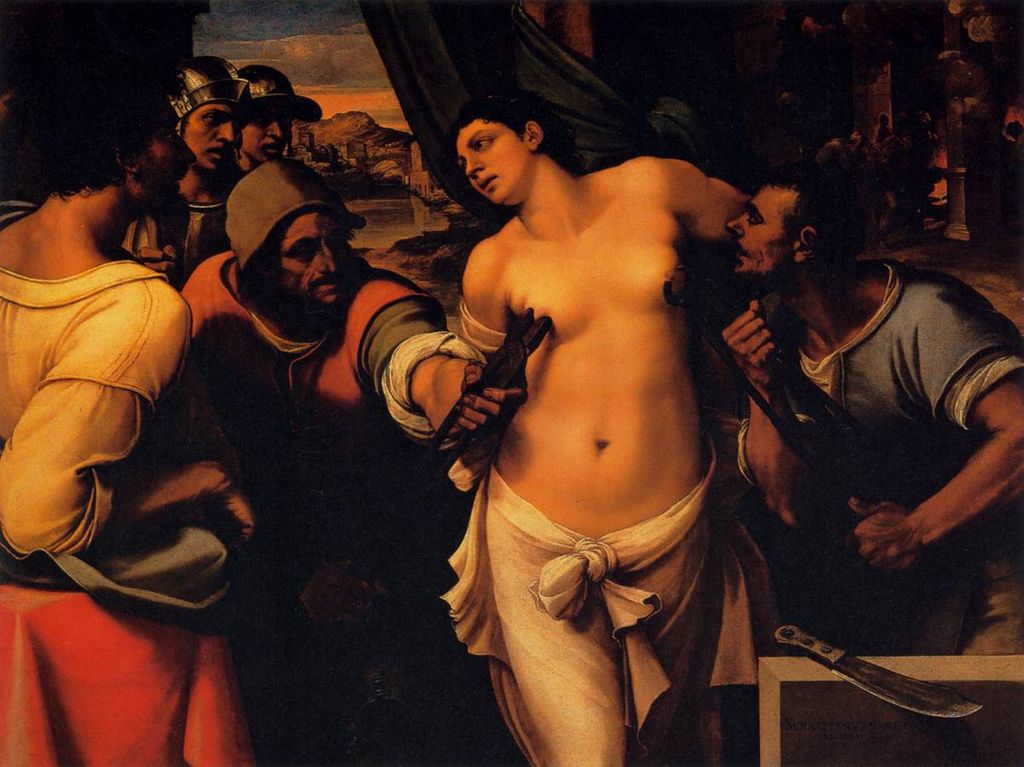Sebastiano del Piombo, The Passion of St. Agatha

1520
Oil on panel, 50 x 70.1 in. (127 x 178 cm.)
Pitti Palace, Florence
The excision of St. Agatha's breasts is the most often pictured moment in her passion. Earlier works encouraged a comparison between the passion of Christ on the cross and Agatha's suffering. Many show her hanging from a cross-like gibbet, with gaping wounds where her breasts had been. Sebastiano's painting, however, seems intended primarily as a sexual treat for the viewer. Agatha's breasts are still intact and the eyes of the soldiers on the left are fixed on them. Quintianus, placed much closer to his victim than in other works, seconds the gaze of the male viewer, his hand ambiguously posed not exactly on the arm of his chair and not exactly over his crotch. The chair itself, loosely draped in red velvet, is of the type one finds in a private home, not the raised throne common in other images of this episode.
The painting was a gift to Ercole Rangone, a newly appointed cardinal whose sexual appetites were the subject of frequent gossip. Noting this, Jill Burke comments on the manliness of the Agatha figure (the broad shoulders, the knot in the cloth where a penis would be, the knife in the foreground that suggests an Italian pun on the deflowering of male or female virgins), and she cites the strong denunciations at the time by church reformers of this "new genre of image, one that deliberately, and intentionally, exploited equivocal…social notions about flesh, sexuality, and spirituality" (492).
Read more about images of St. Agatha.
Source: Web Gallery of Art via this page at Wikimedia Commons